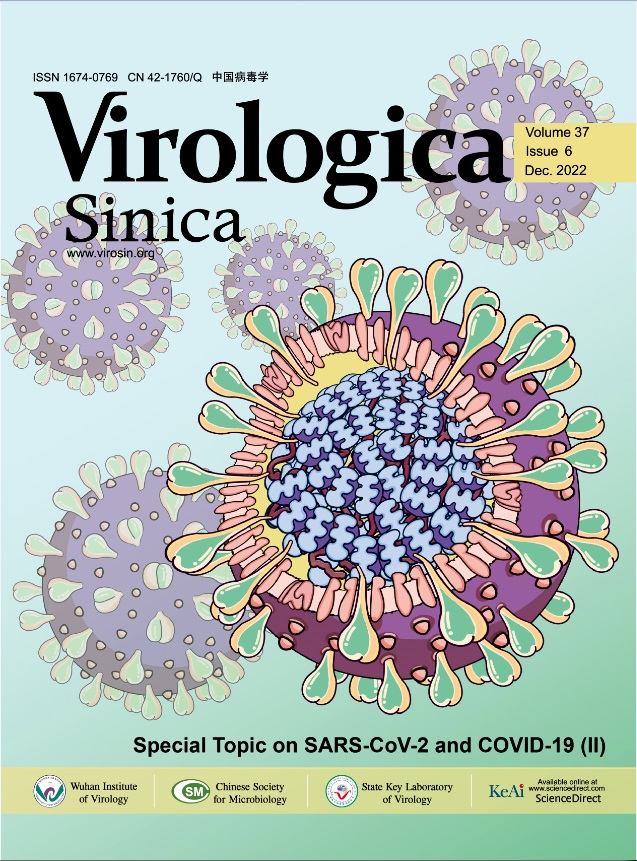-
Almazán, F., Galán, C., Enjuanes, L., 2004. The nucleoprotein is required for efficient coronavirus genome replication. J. Virol. 78, 12683–12688.
-
Bai, C., Zhong, Q., Gao, G.F., 2021. Overview of SARS-CoV-2 genome-encoded proteins. Sci. China Life Sci. 65, 1–15.
-
Bar-On, Y.M., Flamholz, A., Phillips, R., Milo, R., 2020. Sars-cov-2 (Covid-19) by the numbers. Elife 9, 697–698.
-
Brian, D.A., Baric, R.S., 2005. Coronavirus genome structure and replication. In: Current Topics in Microbiology and Immunology, pp. 1–30.
-
Burbelo, P.D., Riedo, F.X., Morishima, C., Rawlings, S., Smith, D., Das, S., Strich, J.R., Chertow, D.S., Davey, R.T., Cohen, J.I., 2020. Sensitivity in detection of antibodies to nucleocapsid and spike proteins of severe acute respiratory syndrome coronavirus 2 in patients with coronavirus disease 2019. J. Infect. Dis. 222, 206–213.
-
Cohen-Dvashi, H., Weinstein, J., Katz, M., Ashkenazy-Eilon, M., Mor, Y., Shimon, A., Achdout, H., Tamir, H., Israely, T., Strobelt, R., Shemesh, M., Stoler-Barak, L., Shulman, Z., Paran, N., Fleishman, S.J., Diskin, R., 2022. Anti-SARS-CoV-2 immunoadhesin remains effective against Omicron and other emerging variants of concern. iScience, 105193.
-
Fehr, A.R., Perlman, S., 2015. Coronaviruses: an overview of their replication and pathogenesis. In: Maier, H.J., Bickerton, E., Britton, P. (Eds.), Coronaviruses: Methods and Protocols, Methods in Molecular Biology. Springer New York, New York, NY, pp. 1–23.
-
Ju, B., Zhang, Q., Ge, J., Wang, R., Sun, J., Ge, X., Yu, Jiazhen, Shan, S., Zhou, B., Song, S., Tang, X., Yu, Jinfang, Lan, J., Yuan, J., Wang, H., Zhao, Juanjuan, Zhang, S., Wang, Y., Shi, X., Liu, L., Zhao, Jincun, Wang, X., Zhang, Z., Zhang, L., 2020. Human neutralizing antibodies elicited by SARS-CoV-2 infection. Nature 584, 115–119.
-
Kang, S., Yang, M., Hong, Z., Zhang, L., Huang, Z., Chen, X., He, S., Zhou, Ziliang, Zhou, Zhechong, Chen, Q., Yan, Y., Zhang, C., Shan, H., Chen, S., 2020. Crystal structure of SARS-CoV-2 nucleocapsid protein RNA binding domain reveals potential unique drug targeting sites. Acta Pharm. Sin. B 10, 1228–1238.
-
Ludwig, S., Zarbock, A., 2020. Coronaviruses and SARS-CoV-2: a brief overview. Anesth. Analg. 131, 93–96.
-
Naqvi, A.A.T., Fatima, K., Mohammad, T., Fatima, U., Singh, I.K., Singh, A., Atif, S.M., Hariprasad, G., Hasan, G.M., Hassan, M.I., 2020. Insights into SARS-CoV-2 genome, structure, evolution, pathogenesis and therapies: structural genomics approach. Biochim. Biophys. Acta, Mol. Basis Dis. 1866, 165878.
-
Ni, L., Ye, F., Cheng, M.L., Feng, Y., Deng, Y.Q., Zhao, H., Wei, P., Ge, J., Gou, M., Li, X., Sun, L., Cao, T., Wang, P., Zhou, C., Zhang, R., Liang, P., Guo, H., Wang, X., Qin, C.F., Chen, F., Dong, C., 2020. Detection of SARS-CoV-2-specific humoral and cellular immunity in COVID-19 convalescent individuals. Immunity 52, 971–977.e3.
-
Peng, Y., Du, N., Lei, Y., Dorje, S., Qi, J., Luo, T., Gao, G.F., Song, H., 2020. Structures of the SARS -CoV-2 nucleocapsid and their perspectives for drug design. EMBO J. 39, 1–12.
-
Sun, X., Yi, C., Zhu, Y., Ding, L., Xia, S., Chen, X., Liu, M., Gu, C., Lu, X., Fu, Y., Chen, S., Zhang, T., Zhang, Y., Yang, Z., Ma, L., Gu, W., Hu, G., Du, S., Yan, R., Fu, W., Yuan, S., Qiu, C., Zhao, C., Zhang, X., He, Y., Qu, A., Zhou, X., Li, X., Wong, G., Deng, Q., Zhou, Q., Lu, H., Ling, Z., Ding, J., Lu, L., Xu, J., Xie, Y., Sun, B., 2022. Neutralization mechanism of a human antibody with pan-coronavirus reactivity including SARSCoV-2. Nat. Microbiol. 7, 1063–1074.
-
Wang, S., Wu, Y., Wang, Y., Chen, Z., Ying, D., Lin, X., Liu, C., Lin, M., Zhang, J., Zhu, Y., Guo, S., Shang, H., Chen, X., Qiang, H., Yin, Y., Tang, Z., Zheng, Z., Xia, N., 2022. Potential of antibody pair targeting conserved antigenic sites in diagnosis of SARSCoV-2 variants infection. J. Virol. Methods 309, 114597.
-
Xiang, F., Wang, X., He, X., Peng, Z., Yang, B., Zhang, J., Zhou, Q., Ye, H., Ma, Y., Li, H., Wei, X., Cai, P., Ma, W.L., 2020. Antibody detection and dynamic characteristics in patients with coronavirus disease 2019. Clin. Infect. Dis. 71, 1930–1934.
-
Xu, X., Chen, P., Wang, J., Feng, J., Zhou, H., Li, X., Zhong, W., Hao, P., 2020. Evolution of the novel coronavirus from the ongoing Wuhan outbreak and modeling of its spike protein for risk of human transmission. Sci. China Life Sci. 63, 457–460.
-
Zeng, W., Liu, G., Ma, H., Zhao, D., Yang, Yunru, Liu, M., Mohammed, A., Zhao, C., Yang, Yun, Xie, J., Ding, C., Ma, X., Weng, J., Gao, Y., He, H., Jin, T., 2020. Biochemical characterization of SARS-CoV-2 nucleocapsid protein. Biochem. Biophys. Res. Commun. 527, 618–623.
-
Zhou, P., Yang, X. Lou, Wang, X.G., Hu, B., Zhang, L., Zhang, W., Si, H.R., Zhu, Y., Li, B., Huang, C.L., Chen, H.D., Chen, J., Luo, Y., Guo, H., Jiang, R., Di, Liu, M.Q., Chen, Y., Shen, X.R., Wang, X., Zheng, X.S., Zhao, K., Chen, Q.J., Deng, F., Liu, L.L., Yan, B., Zhan, F.X., Wang, Y.Y., Xiao, G.F., Shi, Z.L., 2020. A pneumonia outbreak associated with a new coronavirus of probable bat origin. Nature 579, 270–273.













 DownLoad:
DownLoad: